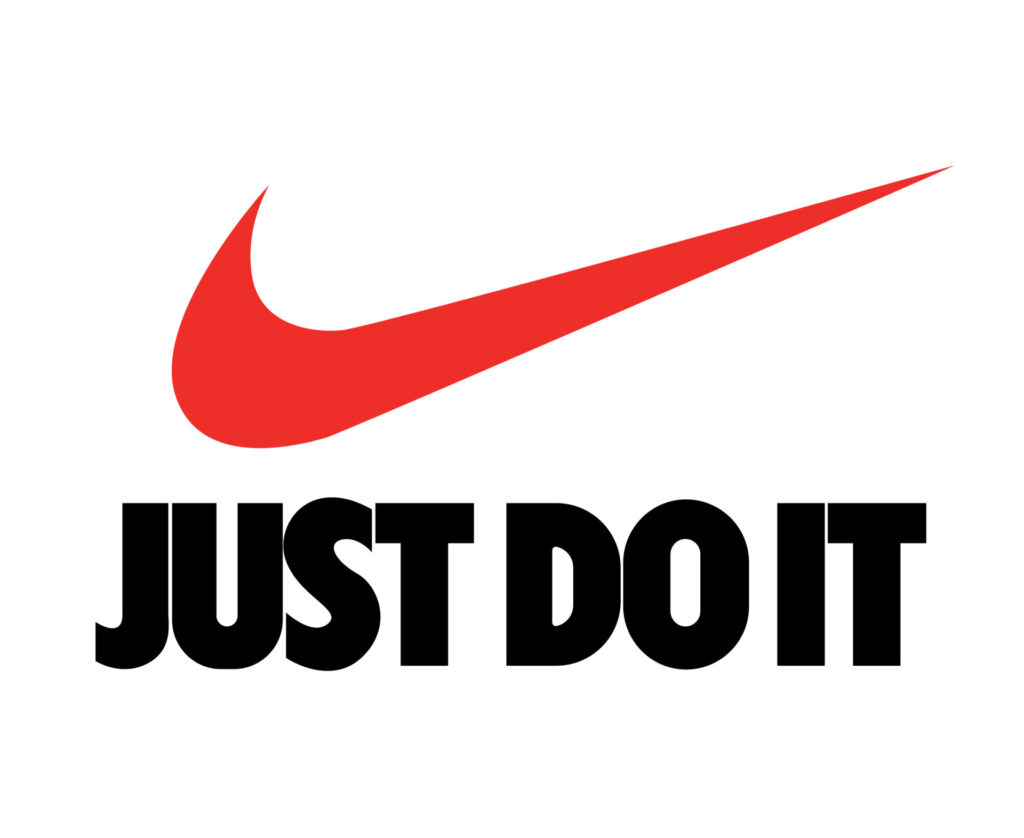Nike is a global company that designs, develops, and sells athletic footwear, apparel, and accessories. The company was founded in 1964 by Bill Bowerman and Phil Knight and was originally called Blue Ribbon Sports. In 1971, the company rebranded as Nike, named after the Greek goddess of victory.
The company’s first product was the Nike “Moon Shoe,” a running shoe with a waffle sole that provided better traction. The shoe was designed by Bill Bowerman, who was a track coach at the University of Oregon, and was made with a waffle iron in his kitchen.
In the early years, Nike focused on selling its products to runners and track and field athletes. However, in the 1980s, the company expanded its product line to include basketball shoes and began signing high-profile athletes to endorsement deals, including Michael Jordan.
Nike’s marketing campaigns have been known for their emphasis on athleticism, determination, and achievement. The company has used the “Just Do It” tagline since 1988, which has become one of the most recognizable advertising slogans in the world. The company has also used memorable advertising campaigns featuring athletes such as Bo Jackson, Charles Barkley, and Tiger Woods.
Over the years, Nike has become one of the most successful and recognizable brands in the world. The company’s products are sold in over 190 countries, and the brand is associated with high performance and quality. Nike has continued to innovate and expand its product line, including the introduction of the Nike Air line of shoes, which featured air cushioning technology.
Today, Nike remains a leading brand in the athletic apparel and footwear industry, with a strong presence in both performance and lifestyle markets. The company continues to focus on innovation and design, and has recently made efforts to become more sustainable in its production processes.
Glorious History of Nike – A Timeline
The company has a rich history that has spanned over five decades, marked by significant milestones and innovations that have revolutionized the athletic footwear and apparel industry. Here is a detailed history of Nike:
1960s
In 1962, Bill Bowerman, a track and field coach at the University of Oregon, began experimenting with different materials to create better running shoes. His efforts led to the creation of the “waffle sole,” which provided better traction and helped athletes perform better on the track. Bowerman partnered with his former student, Phil Knight, to launch Blue Ribbon Sports, a company that sold shoes manufactured by a Japanese company called Onitsuka Tiger. Blue Ribbon Sports later became Nike in 1971.

1970s
In 1971, Nike launched its first line of shoes, which included the Nike “Cortez.” The shoe was designed for runners and quickly became popular among athletes. In 1972, Nike became the official sponsor of the US Olympic track and field team and provided shoes for the athletes. That same year, Nike launched the “Moon Shoe,” which was the first Nike shoe to feature the iconic swoosh logo.
In 1978, Nike signed its first endorsement deal with a professional athlete, distance runner Steve Prefontaine. The deal marked the beginning of Nike’s partnership with elite athletes, which would become a cornerstone of the brand’s marketing strategy.
1980s
In the 1980s, Nike expanded its product line to include basketball shoes, launching the Air Force 1 in 1982. The shoe was the first to feature Nike’s air cushioning technology, which provided better shock absorption and support. In 1984, Nike signed Michael Jordan to an endorsement deal and launched the Air Jordan line of basketball shoes. The shoes quickly became a cultural phenomenon and helped to establish Nike as a leading brand in the athletic footwear market.
In 1988, Nike launched its iconic “Just Do It” ad campaign. The campaign featured athletes performing various sports and activities, accompanied by the slogan “Just Do It.” The campaign was a huge success and helped to establish Nike’s brand identity as one focused on determination, perseverance, and athletic achievement.
1990s
In the 1990s, Nike continued to innovate and expand its product line. The company launched the “Air Max” line of shoes in 1990, which featured a visible air cushioning unit in the sole. In 1996, Nike introduced its “Nike Air Zoom” technology, which provided better cushioning and support for athletes.
In the late 1990s, Nike faced controversy over its labor practices in factories overseas. The company was accused of using sweatshop labor and paying workers low wages. Nike responded by implementing a code of conduct for its suppliers and improving working conditions in its factories.
2000s
In the early 2000s, Nike continued to innovate and expand its product line. The company launched the “Shox” line of shoes in 2000, which featured a spring-like cushioning system. In 2004, Nike introduced its “Nike Free” line of shoes, which allowed for more natural movement and flexibility.
In 2005, Nike launched the “Nike+” platform, which allowed runners to track their progress and share their runs with friends. The platform included a sensor that could be inserted into Nike shoes and synced with a user’s iPod.
2010s
In the 2010s, Nike continued to focus on innovation and sustainability. The company launched its “Flyknit” technology in 2012, which used a single thread to create a seamless, lightweight shoe. Nike also launched its “Better World” initiative in 2011, which aimed to reduce the company’s environmental impact and improve working conditions in its factories.
In 2018, Nike launched its “Dream Crazy” ad campaign featuring former NFL quarterback Colin Kaepernick. The campaign sparked controversy and a boycott by some consumers, but also received widespread praise for its message of social justice and inclusion.
Throughout the decade, Nike continued to collaborate with top athletes, artists, and designers to create innovative products and limited-edition releases. The company also expanded its digital presence with the launch of the Nike Training Club app and the Nike Run Club app, which offered personalized training programs and tracked users’ workouts.
2020s
In the 2020s, Nike has continued to innovate and adapt to the changing landscape of retail and consumer behavior. The company has focused on digital experiences and e-commerce, as well as sustainability and social responsibility.
In 2020, Nike launched its “Move to Zero” initiative, which aims to achieve zero carbon and zero waste in the company’s supply chain by 2050. The company has also launched several sustainable products, including the Space Hippie line of shoes made from recycled materials.
Nike has also responded to the COVID-19 pandemic with innovative solutions, including the launch of its “Living Room Cup” challenge, which encouraged consumers to stay active at home. The company also partnered with healthcare professionals to develop personal protective equipment for frontline workers.
Overall, Nike’s history is marked by a commitment to innovation, performance, and social responsibility. The company has established itself as a global leader in athletic footwear and apparel, and continues to push boundaries and inspire athletes and consumers around the world.
How did Nike become so successful?
Nike became a cultural phenomenon due to its strong brand image, innovative products, and effective marketing strategies.
Strong Brand Image: Nike’s brand image is built around the concept of “Just Do It,” which has become a cultural catchphrase for pushing oneself to achieve goals. The company’s logo, the Swoosh, is one of the most recognizable symbols in the world, and is synonymous with athletic performance and style.
Innovative Products: Nike has consistently introduced innovative products that push the boundaries of athletic footwear and apparel. From the introduction of the Air Jordan line of basketball shoes in the 1980s to the launch of the Flyknit line of running shoes in the 2010s, Nike has always been at the forefront of technological advancements in the industry.
Effective Marketing Strategies: Nike’s marketing campaigns are often talked about and celebrated for their creativity and impact. From the “Just Do It” campaign in the 1980s to the recent “Dream Crazy” campaign featuring Colin Kaepernick, Nike has a history of taking bold stances and tapping into cultural moments to create meaningful connections with consumers.
Celebrity Endorsements: Nike has also leveraged the power of celebrity endorsements to enhance its brand image and appeal. From Michael Jordan to LeBron James to Serena Williams, Nike has aligned itself with some of the biggest names in sports and entertainment, further cementing its cultural relevance.
Inclusive Marketing: In recent years, Nike has also focused on promoting diversity and inclusion in its marketing campaigns, featuring athletes of all backgrounds and abilities. This has helped the company appeal to a wider audience and position itself as a socially responsible brand.
Overall, Nike’s combination of a strong brand image, innovative products, effective marketing strategies, celebrity endorsements, and inclusive messaging has helped it become a cultural phenomenon and a dominant force in the athletic industry.
Brand Elements of Nike
Brand elements are the different components that make up a brand’s visual and verbal identity. Nike’s brand elements include:
Logo: Nike’s logo, the Swoosh, is one of the most recognizable symbols in the world. Designed in 1971 by Carolyn Davidson, a graphic design student at Portland State University, the Swoosh is meant to convey movement and speed. The logo is typically displayed in black or white, but can also be seen in a variety of colors depending on the product and marketing campaign.

Tagline: Nike’s tagline, “Just Do It,” is one of the most famous brand slogans in history. First introduced in 1988, the tagline is meant to inspire and motivate consumers to push themselves to achieve their goals. “Just Do It” has become a cultural catchphrase and is often used in popular culture and advertising.

Brand Name: The name “Nike” comes from the Greek goddess of victory. The name is meant to evoke a sense of strength, power, and achievement, and is easily recognizable around the world.
Colors: Nike’s signature colors are black and white, which are meant to convey a sense of sophistication and simplicity. The company also uses a variety of other colors in its branding and marketing campaigns, depending on the product and target audience.
Packaging: Nike’s packaging is designed to be simple, yet stylish. Products are typically packaged in a black or white box with the Swoosh logo prominently displayed. The packaging is meant to convey a sense of quality and exclusivity.

Brand Identity System: Nike has developed a comprehensive brand identity system that includes a variety of design elements, such as typography, photography, and graphics. These elements are used consistently across all of Nike’s marketing and branding materials to create a cohesive and recognizable visual identity.
Overall, Nike’s brand elements are designed to convey a sense of strength, power, and achievement, while also emphasizing simplicity and sophistication. By maintaining consistency across all of its branding and marketing efforts, Nike has created a strong and recognizable brand identity that resonates with consumers around the world.
Also Read: Nike – The Rise And Rise of Sportswear Giant
Nike Revenue Growth over the years
Nike has experienced significant financial growth over the years, driven by its successful product offerings, strong brand image, and effective marketing strategies. Here is a brief overview of Nike’s financial performance over the years:
1980s: Nike’s revenue increased from $60 million in 1980 to $867 million in 1988.
1990s: Nike’s revenue continued to grow in the 1990s, reaching $9.2 billion by the end of the decade. The company’s net income also grew from $441 million in 1990 to $795 million in 1999.
2000s: In the 2000s, Nike’s revenue grew from $9.9 billion in 2000 to $19.2 billion in 2009. Net income also increased from $589 million in 2000 to $1.9 billion in 2009.
2010s: Nike’s revenue growth continued in the 2010s, reaching $34.4 billion by the end of the decade. Net income also increased from $2.1 billion in 2010 to $4.0 billion in 2019.
2020s: Despite challenges posed by the COVID-19 pandemic, Nike’s revenue continued to grow in the early 2020s, reaching $44.5 billion in fiscal year 2021.
Overall, Nike has experienced consistent financial growth over the years, with revenue and net income increasing steadily over time. The company’s strong brand image and focus on innovation and product design have helped it maintain its position as a leader in the athletic footwear and apparel industry.
To read more content like this, subscribe to our newsletter



